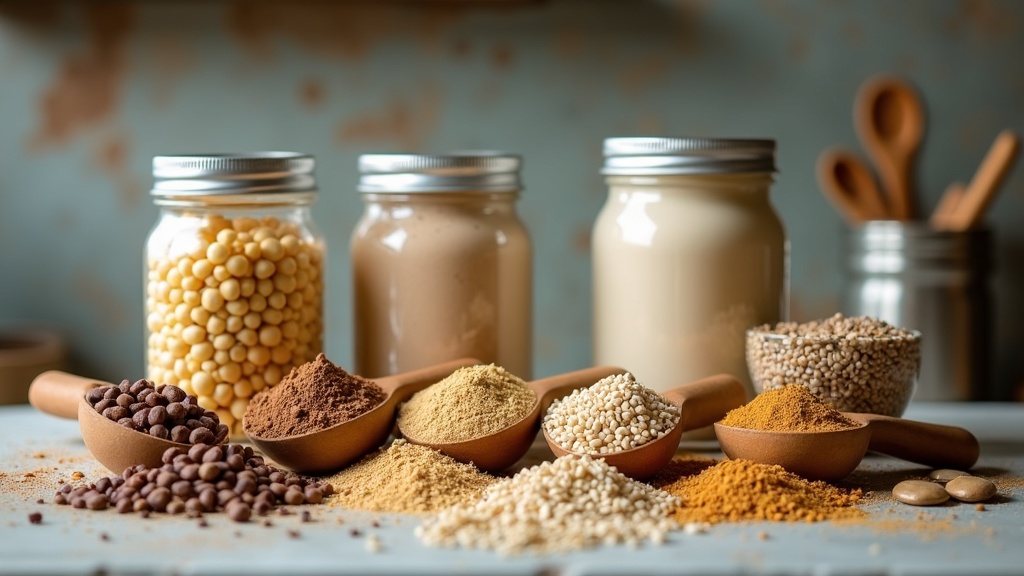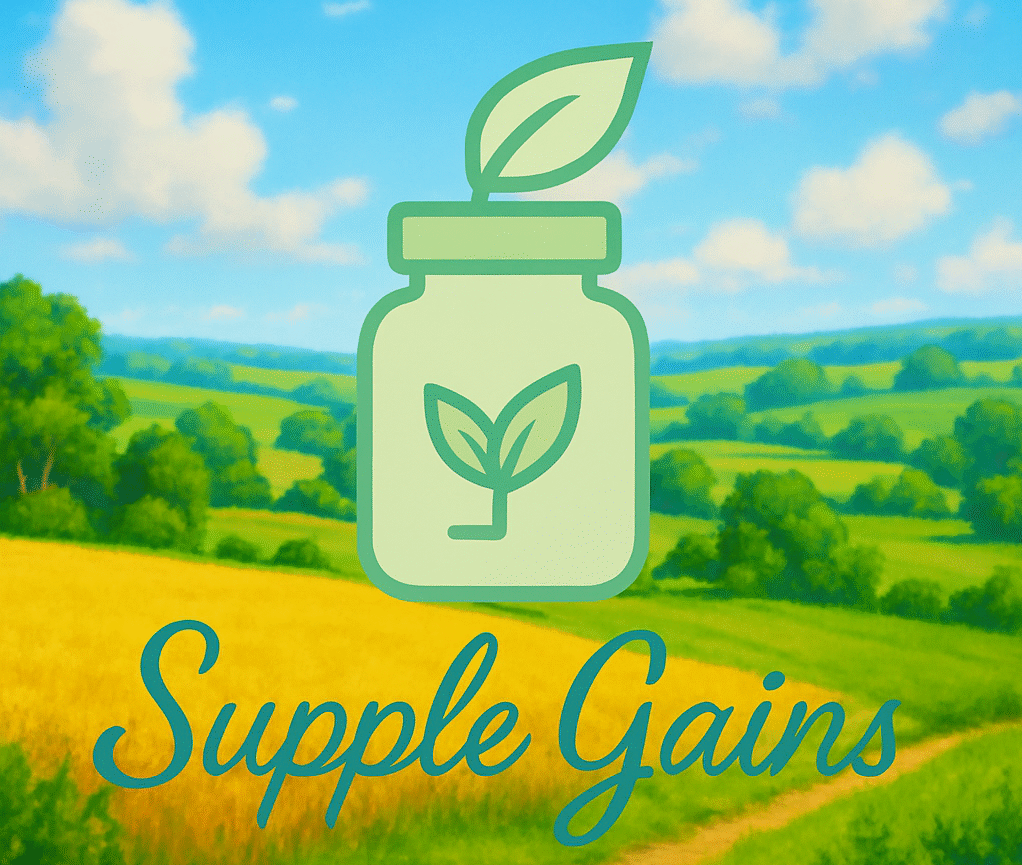Finding a good plantbased protein powder can really make a difference for anyone trying to boost their nutrition, whether you’re going vegan, getting more into fitness, or just looking for a balanced way to add protein to your meals.
With so many plantbased options popping up on shelves, figuring out what actually works well for your taste buds, goals, and daily routine can feel a little confusing.
I’ve tried quite a few myself and dug into the science, so this guide should help you figure out the best plantbased protein powders for your needs.

Why PlantBased Protein Powders Are Worth Considering
Plantbased protein powders have picked up a lot of attention for good reasons.
They give a handy boost of protein, sometimes just as much per scoop as whey, without the dairy. This is great if you’re lactose intolerant, vegan, or just looking for cleaner ingredients.
I’ve found plant protein to be easy on my stomach, and it usually contains more fiber than standard protein powders.
Also, some brands add in greens, probiotics, or extra micronutrients, packing a bigger nutrition punch.
With the plantbased food market expected to keep growing, I wouldn’t be surprised to see even more creative blends showing up in stores.
One tip: plantbased protein powders aren’t just for vegans.
These powders work well for anyone wanting to switch things up with protein sources or reduce their reliance on animal products.
You’ll find plant options in mainstream gyms and fitness centers as well as vegan shops.
Types of PlantBased Protein Powders
Different plant proteins each have their own texture, flavor, and nutrition profile.
Here are the main types you’ll run into and how they stack up:
- Pea Protein: Super popular for its creamy texture and high protein content. It’s made from yellow split peas and is rich in iron.
- Brown Rice Protein: This one is mild and hypoallergenic, making it good for sensitive stomachs. It’s lower in lysine but easy to digest.
- Hemp Protein: Full of fiber, omega3s, and a slightly nutty taste. The protein percentage per scoop is a bit lower than pea, but it’s nutrientrich.
- Soy Protein: One of the few plant options that’s a complete protein, meaning it has all essential amino acids. It blends smoothly but isn’t everyone’s cup of tea tastewise.
- Pumpkin Seed, Sunflower Seed, Sacha Inchi, and Other Seeds: These add healthy fats and minerals. Blends that include them tend to taste a little “earthier.”
Some brands blend two or more protein sources together to boost amino acid completeness and smooth out flavors, which is especially handy if you’re picky about tastes or textures.
There are also newer blends hitting the market that include superfoods like moringa, spirulina, and even mushrooms for added micronutrients and unique health perks.
These can provide extra nutrition and give the protein powder a slightly greenish or earthy flavor, depending on the ingredients used.
What To Check When Choosing a PlantBased Protein Powder
I usually keep a shortlist of checks before buying a tub of plant protein:
- Protein Per Serving: The sweet spot is usually 15–25 grams per scoop. Less than that and you’re not really getting a great bang for your buck.
- Amino Acid Profile: Complete proteins include all nine essential amino acids. Blends can help with this if you’re not using soy or a carefully formulated mix.
- Sugar Content and Sweeteners: Some powders taste like dessert (and often contain a lot of sugar or weirdtasting stevia). If you’re sensitive to this, check the label carefully. Some newer sweetener blends are pretty mellow.
- AllergenFriendly: Some people have trouble with soy, nuts, or gluten. If that’s you, look for allergen free options or powders certified as allergen safe.
- Additives and Extras: Check if there are artificial flavors, gums, or thickening agents if you want a super clean ingredient list. Some powders add greens, enzymes, or probiotics for extra wellness.
- Price and Servings per Container: More expensive isn’t always better. Check the price per serving to get a real sense of value.
Even though no vegan protein powder is totally perfect, it’s pretty easy to find one that fits your needs if you keep these basics in mind.
Take time to look over multiple brands, compare nutrition panels, and read through honest reviews to spot issues with taste, mixability, or effectiveness.
Quick Guide: Picking the Right Protein for Your Goals
Different folks have different plans, so I match my protein powder choice to what I’m aiming for. Here’s how you can do the same:
- For Muscle Gain: Go for a blend (like pea and rice) or a complete protein (like soy) that packs 20 or more grams per scoop. Some brands even mimic the amino acid profile of whey for better muscle support, helping you build and repair muscle after tough workouts.
- For Weight Management: Look for options with fiber and little to no added sugar. Hemp is a good choice since the extra fiber helps you feel full longer, helping with appetite control.
- For Sensitive Diets: Singlesource proteins like brown rice or pea powder are usually gentle on the gut and work for people with allergies or intolerances. Avoid soy or glutenbased ones if those bother you.
- For General Wellness: Blends with added greens, vitamins, minerals, or probiotics give an extra wellness boost, covering more than just your protein needs. These are good if you want a single solution that covers several health benefits in one go.
Flavors vary a lot here, so I always suggest buying a sample size before committing to a big tub.
Mixing plantbased powder into smoothies, cooked oatmeal, or pancake batter also works nicely if you don’t love it in plain water.
Try out recipes, and you might stumble upon new favorite combos that include your powder.
Things to Watch Out For With PlantBased Protein Powders
No protein powder is perfect. There are a few things that can trip people up when trying plantbased options:
- Texture: Some plant powders have a gritty or chalky mouthfeel. I’ve found blends mix up creamier, and a blender always helps create a smoother drink.
- Flavor: Earthy or grassy tastes can show up, especially in hempbased powders. Flavored or blended options are usually milder if you mind the taste, while others taste more like dessert thanks to cocoa or vanilla.
- Heavy Metals: There’s been some talk about trace heavy metals in plant protein powders. Choosing brands with thirdparty testing is usually a safer bet. Look for badges from NSF Certified for Sport or Informed Choice, for example, to double-check safety.
- Cost: Plant proteins can get pricey, especially if they’re organic or have lots of extras. Value tubs or bulk buy options can keep your costs down, especially if you use protein powder frequently.
Texture
I often hear complaints that some vegan protein powders mix up gritty or “muddy.”
This usually comes down to the protein source; rice and hemp are the main offenders.
Using a good blender, adding things like banana or nut butter, or mixing your protein powder with nondairy yogurt can help smooth out shakes.
Pea protein, in my experience, wins for creaminess.
Flavor
People are pretty divided about plantbased taste.
Some enjoy the earthy flavor, while others prefer lots of chocolate or vanilla flavoring.
If you like experimenting, try unflavored powder in recipes like soups, stews, or baked oatmeal.
Otherwise, classic chocolate or vanilla works for almost anyone with a sweet tooth, and there are even some fun seasonal flavors if you want to mix in some variety.
Heavy Metal Concerns
I always go for brands that show off independent lab results or have thirdparty certifications.
The Clean Label Project and ConsumerLab both do regular reviews, and some brands share these results online.
It feels safer and more transparent choosing a powder tested for contaminant levels, so keeping an eye out for testing certificates can give peace of mind.
Cost
Some plantbased proteins get expensive, especially if they’re marketed as premium or “superfood” blends.
I find that sticking to basics, no fancy packaging and fewer extra addins, keeps costs down without skimping on nutrition.
Buying larger containers or looking for sales also helps lower the cost per serving, so you can keep quality without breaking the bank.
Checking reviews, comparing ingredient lists, and sampling smaller containers before buying a huge tub have all saved me regret and money over time.
Don’t hesitate to ask friends, trainers, or online communities for honest feedback—they often spot issues or offer tips that help with your decision.
My Top Picks for PlantBased Protein Powders
After a lot of tasting and research, here are some options I think work really well (and others in the plantprotein community tend to agree):
- Orgain Organic Protein: Pea, brown rice, and chia blend with a smooth texture. Mild flavor and easy to mix.
- Vega Sport Premium Protein: Pea, pumpkin seed, sunflower seed, and alfalfa for a complete amino acid blend. Creamy shakes with good chocolate and vanilla options.
- Garden of Life Raw Organic Protein: Sprouted grains, seeds, and legumes with lots of extra enzymes and probiotics. Good for sensitive guts or digestive health.
- NOW Sports Pea Protein: Simple, singleingredient pea protein at a solid price point.
- Sunwarrior Classic Plus: Raw vegan blend with a decent mix of grains and seeds. Reliable if a bit mild, and plays well in smoothies or baking.
Taste, cost, and ingredient transparency are my go-to dealmakers or dealbreakers.
None of these will work for everybody, but they cover most preferences and dietary needs pretty well.
Try a few to see what fits your taste, goals, and budget.
The plantprotein market grows fast, so keep an eye out for new brands as you go.
Frequently Asked Questions About Plant Protein Powders
If you’re new to plantbased protein, here are some common questions people have:
Question: Are plantbased protein powders complete proteins?
Answer:
Some, like soy or blended products (pea plus rice), offer all essential amino acids, while singlesource proteins sometimes lack one or two.
Blends usually solve this easily, so check the ingredient list if you want full coverage.
Question: Do plantbased proteins work as well as whey for building muscle?
Answer:
Plant proteins can support muscle growth just like whey, especially complete blends.
Just make sure you’re hitting your total daily protein needs and including a variety of protein sources in your diet for best results.
Question: Can you use plantbased protein powders for weight loss?
Answer:
Yes, as long as you factor in total calorie intake.
Some plantbased powders help with satiety since they contain more fiber than whey or casein.
Use them as part of a meal replacement smoothie or snack for a filling, lowcalorie option.
Question: What about allergies?
Answer:
Always check the label.
Pea and rice proteins are usually safe for people avoiding soy, gluten, or dairy, but blends might contain other ingredients.
Doublecheck the allergen statement on the package and ask the manufacturer if in doubt.
Final Thoughts on Getting the Best From PlantBased Protein Powders
Picking a plantbased protein powder that suits your diet, taste, and goals is a process, but it pays off.
Taking some time to compare ingredient lists, try samples, and factor in your own dietary concerns makes it way easier and more satisfying in the end.
Once you find a blend you like, it’ll be a super useful tool for boosting your daily nutrition.
I keep a tub or two on hand for everything from quick shakes after the gym to experiments in pancakes and oatmeal.
It’s a practical choice that can easily fit in with a bunch of different health routines and diet plans.
Take your time, check out reviews, and don’t be afraid to mix in some variety; plantbased protein powder can quickly become a staple in a healthy, energizing lifestyle.
